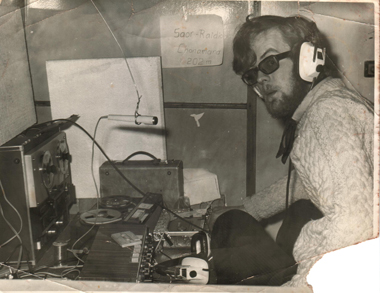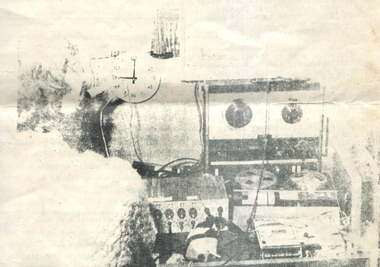I came from a cultural background that wouldn’t have had much respect for the native culture or language of Ireland.
Being educated by the Christian Brothers, with their ideas of beating the Irish language into us, did little to foster love of my native tongue. In fairness I do remember a particular brother who used to roll the sonorous sounds of the poem Urchnoc Chein Mhic Cainte around in his mouth in a way that indicated to me, for the first time, that the language had great beauty;
“A chiúin-bhean tséimh na gcuachann péarlach,
Gluais liom féin ar ball beag,”
Otherwise my appreciation of the language has been almost entirely due to chance and falling into it in accidentally.
While still in college I had a great friend(and he is still one!) Jim Flanagan from Baile Mhuirne, in the Gaeltacht area of Cork, and I spent many happy times in their family house in “The Mills”. Another friend Maggie Loughnan had a summer house in Dun Chaoin in the Kerry Gaeltacht, I have a great memory of spending days perched over Cuminole Strand watching then film scenes from Ryans Daughter.
Almost incidentially I managed on these occasions to pick up a love and some small facility with the language.
My significant moment with the Irish language was however to arrive later.
One of my great friends in school and college (later to be the best man at my wedding and indeed a great friend still) is one Michael Healy.
Now Michael was talented in many ways but he was (and is) a bit of an electronics genius.
In the sixties, while we were still at school the Pirate radios started to broadcast in England.
Michael, fired by this , started up what must have been the first Irish pirate radio station, Radio Juliet.
As I remember it most of the necessary parts for the studio were in a biscuit tin and they travelled around Cork , moving from location to location on the backs of Honda 50s.
This received enormous coverage from the Irish press and a certain notoriety for Michael.
In 1970 he was approached by the civil rights movement of Connemara, Gluaiseacht Cearta Sibhialta, to help set up an Irish language pirate radio station in the Gaeltacht there.
This was to start broadcasting in Easter of 1970.
Michael was delighted to do this and asked me along for support.
My actual helpfulness quotient must have been fairly low.
My Irish wasn’t too bad but my knowledge of all things electronic was abysmal.
The people of Connemara were wonderfully kind to us however, and fed and housed us royally.
The transmitting station was this time a fairly sophisticated caravan, a long way from a biscuit tin but equally mobile.
On Easter Sunday 1970 Saor Raidio Chonemara hit the air to enormous press coverage.
The reporters and cameras arrived the following morning all keen for pictures of the Irish Pirates.
As most of the broadcasters had proper jobs to go back to it was decided that the expendable (and never publicity shy) Mairtin O Duibhir would be photographed as the token pirate.

The following day the Irish Independent front page was decorated with a picture of yours truly, taken from the back and presumably totally un recognisable.

(This is actually the shot which was on the Independent much battered by being carried around by me for 36 years.)
The day after I decided to ring in home.
The entire Saor Raidio project had of course been carried on in total secrecy.
I had told my family that I was going camping with Michael in Kerry.
“Well” said my mother to me on the phone., “And are you enjoying your time in Kerry”. When I said I was, she was quick to call my bluff.
“You are up in Galway with that Pirate Radio station “ she said.
“There is no way I wouldn’t have recognised the Aran jumper you are wearing on this morning’s Independent, I knitted it for you myself”
So I was hoist with my own gansey!
Saor Raidio was a great success and is generally admitted to have forced the government’s hand in starting up Radio Na Gaeltachta.
In several histories of broadcasting in Ireland they talk of the starting of Saor Raidio by the Gaeltacht civil rights movement “helped by two engineers from Cork; Micheal O Healaithe and Mairtin O Duibhir.
Is mise Mairtin O Duibhir.
6 comments
